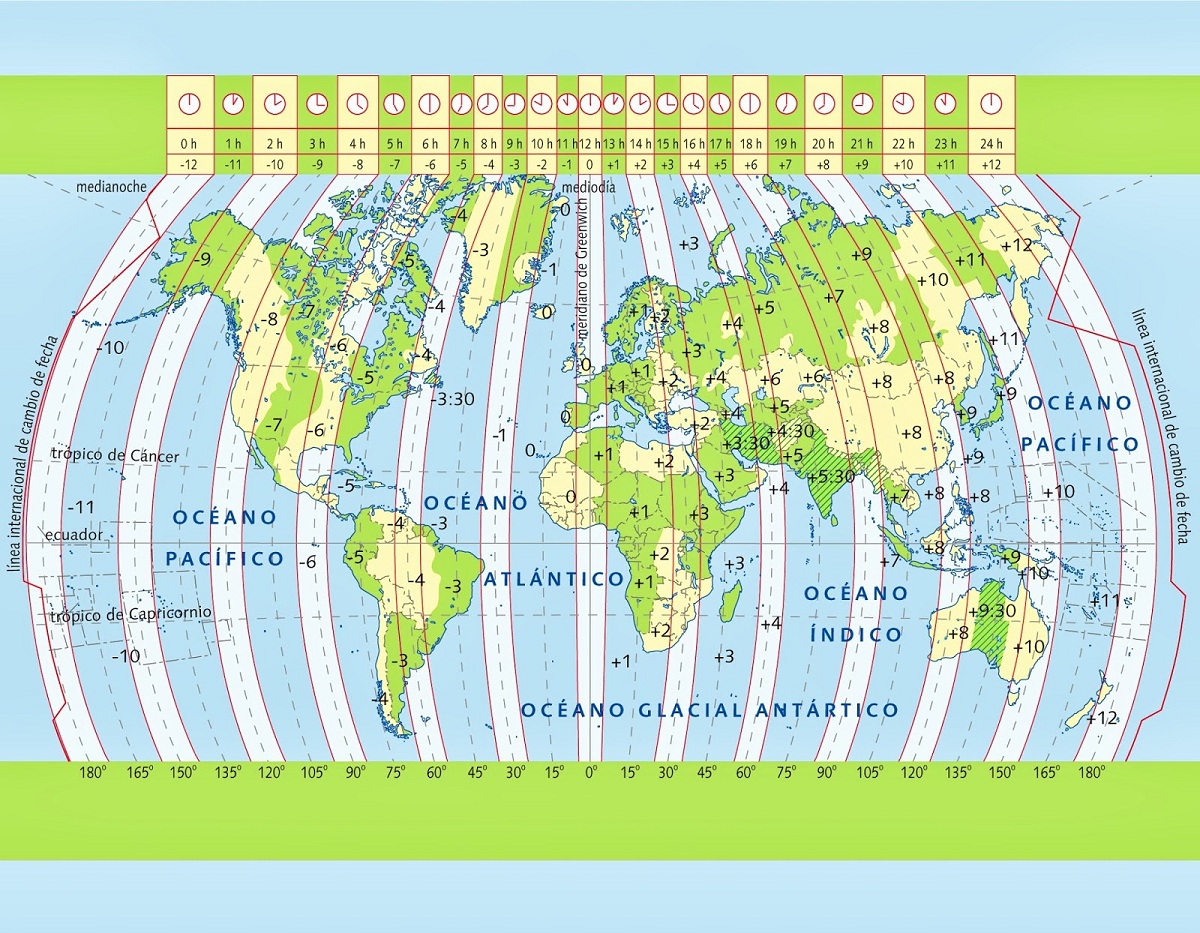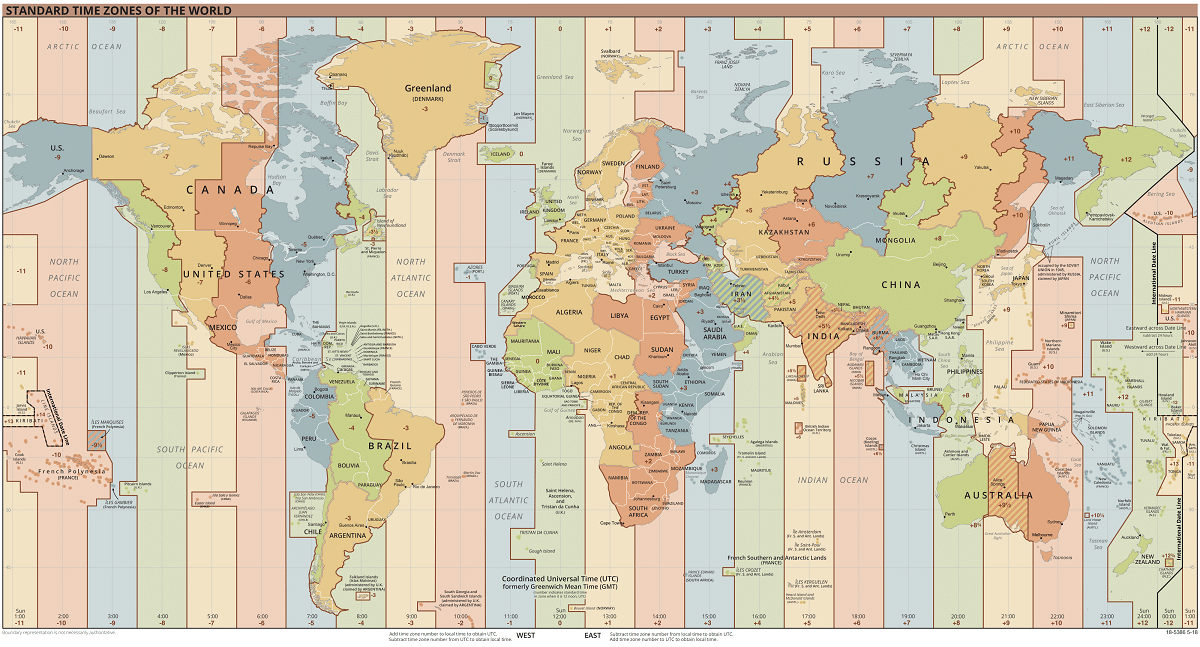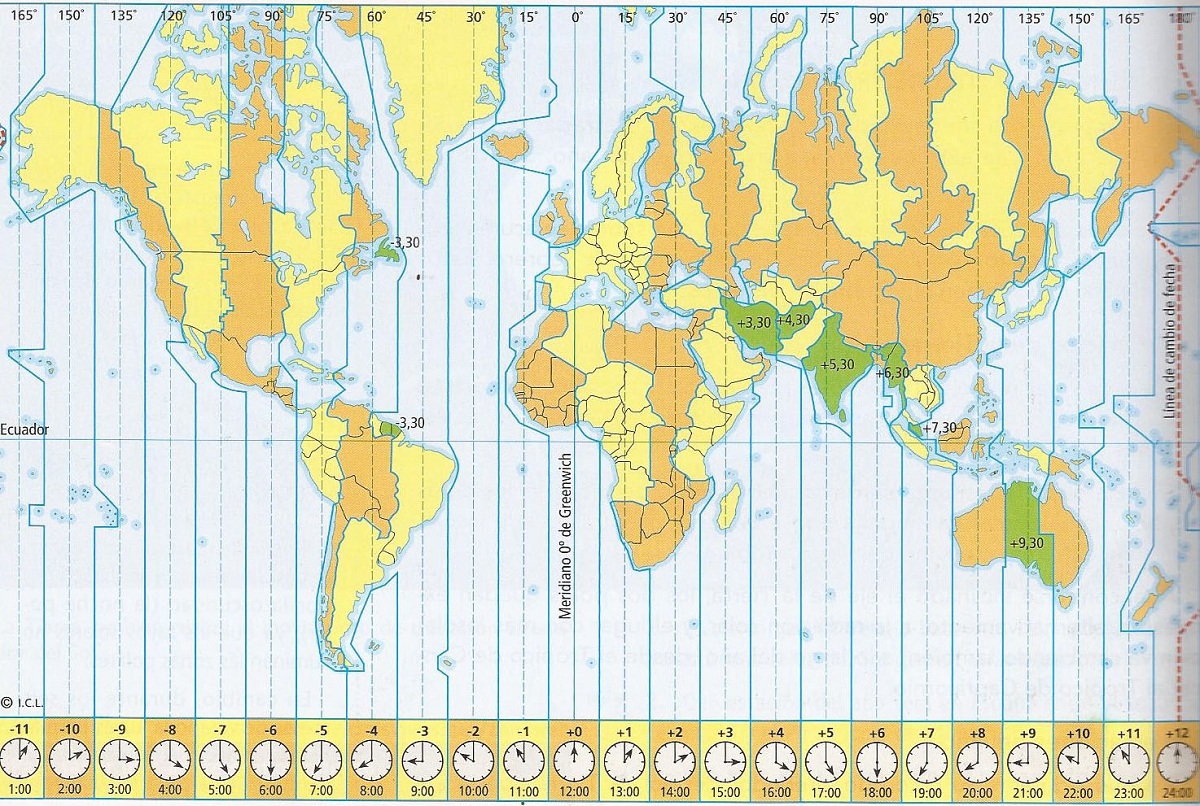
Depending on the information that is extracted from a coordinate map We can use the meridian zero or Greenwich meridian to be able to divide the planet earth into 24 sections that we know as time zones. Time zones are those imaginary lines in which we divide the earth in order to establish time divisions and it is a useful resource to be able to organize time around the entire planet.
In this article we are going to tell you how time zones work and how important it is.
What are time zones

Since our planet is continuously rotating on itself it is not the same time in one area of the planet in another. While it is daylight in Spain, it is still dawning on the American continent. Therefore, if we want to establish a schedule for everyone, we must take these differences into account. This is why the time zones are developed.
Time zones are born from a division of our planet into 24 sections using the zero meridian as a reference. Meridian texts can be found on a coordinate map. This becomes a useful resource for organizing your time. Each time zone measures 15 degrees. This means that in order to divide the 360 degrees of the terrestrial sphere, 24 sections must be created. Each section will indicate the number of hours it takes for the earth to go around its own axis. This is how we tell how it takes a day to turn around.
The 15 degrees measured by each time zone in what is divided on the planet, corresponds to one hour. Therefore, among the 24 sections in which the land is divided correspond to 24 hours a day.
How they are calculated

In order to establish a consistent schedule throughout the planet, the time zones must be calculated correctly. Time zones are governed by a time standard known as UTC (Coordinated Universal Time). These world time coordinates can in turn be obtained from international atomic time. This time is a scientific standard that tries to measure the time that passes in the atomic clocks and different points of the planet are counted. For now, it is the most accurate model to be able to calculate time.
Time zones on the planet are calculated using as reference the zero meridian located in London. From this zero meridian to the east it adds up to one hour for each time zone. On the contrary, from the zero meridian to the west one hour is subtracted. The reason it is added or subtracted in hours depends on the rotation of the earth. And it is that the planet rotates in a direction from west to east. For this reason, the hourly calculation of the spindles that travel this direction is called positive deviation, while the spindles that are calculated in the opposite direction, that is, to the west, are called negative deviation.
Examples of time zones
We are going to show some examples of time zones to facilitate understanding. You can quickly calculate the time in a certain city in a region by knowing its time zone. You have to remember if this zone is negative to subtract hours or if it is positive to add hours. These are some examples:
Some of the cities that correspond to the zero meridian have time zones UTC ± 00:00 and are for example Mali, Ivory Coast, Greenland, Mauritania, Gambia, Portugal, among others.
Some cities whose time zone is UTC -05: 00 (five hours behind) are Mexico, Colombia, Canada, Peru and some regions of Brazil. In this case, we see how the time zone is negative and means that five hours must be subtracted from the time indicated by the zero meridian. If in the localities that are located in the meridian it is 10 at night, in all the regions that have this time zone it will be 5 in the afternoon.
We are going to see other more extreme examples such as UTC -12: 00 (twelve hours less): here we find Baker Island and Holland Island. Here we can see that it is at the zero meridian it is 7 in the afternoon, in these islands it will be 7 in the morning.
Now we go to the other side where we have to add hours. With a time zone of UTC +06: 00 (six hours more) we find Bangladesh, Russia and Bhutan, among others. Here we can see that they serve meridian but are 9 in the morning, in these countries it will be 3 in the afternoon.
What are they for

Many people wonder what time zones are for. The main objective is to be able to make time around the world. Hours are based on different meridians as decided by the authorities of each country or locality. Each type of time zone has certain consequences in the daily life of each country.
With this creation of the time zone system, we find a measurement of the time of the 24 hours of the day governed from the zero meridian. This is how it becomes easier and more practical to be able to calculate the hours in each place. The initiative to create a world time but governed by time zones and subject to the zero meridian was from Scottish-Canadian engineer Sandford Fleming. The creation of this way of measuring time across the planet came about at the end of the XNUMXth century.
Since there are these time changes depending on the area of the world where we are, there is a phenomenon known as Jet lag. It is about the maladjustment to different schedules and affection to the circadian rhythms of two of the people who travel constantly. For example, for flight attendants and pilots this Jet lag usually affects them quite a bit in their daily lives. This is because, when they arrive in a country far from their origin, the schedule is not the same, nor are the activities carried out in it.
I hope that with this information you can learn more about the different time zones.